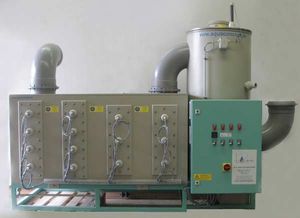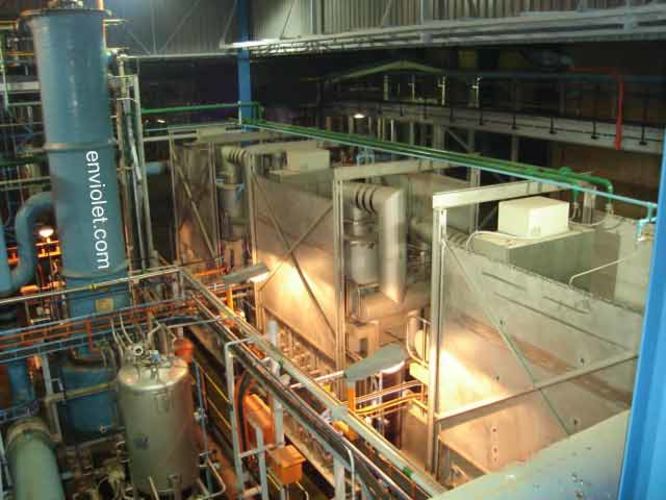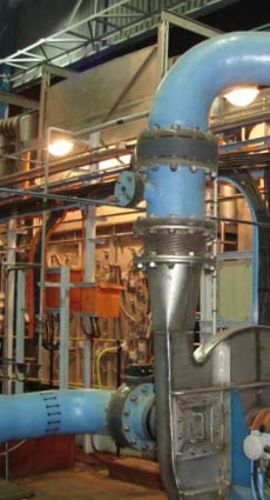uv reactors, photo-oxidation, advanced oxidation (aop), recycling & engineering
for industrial use
Waste Gas Purification by UV Oxidation
UV oxidation is a powerful tool in waste gas cleaning of all compounds, which can easily be oxidized, such as organic compounds (Aromatics, VOC, mercaptenes, ...) and also inorganic compounds (such as NOx, N2O, H2S, ...) as well as germs.
By this organic concentration in the gas can be removed also like odor units, causing bad smell. At same time also sanitation of the waste gas can be achieved.
Organic compounds are partially oxidized, in the UV reactor and modified in a way, such that the hydrophilic character increases and a sorption of the modified compounds is made possible in the scrubber water.
When necessary, the following treatment is reprocessed in the aqueous phase.
Inorganic compounds are often fully oxidized in the gas phase before an effective scrubbing becomes possible. The treatment of the scrubber water follows after the sorption process.
Practical applications mostly show the presence of organic and inorganic contaminants at the same time.
A later modification of existing scrubber systems is also possible. This can be done by adding reactors or UV treatment modules.
Due to this, the scrubbing performance increases and at the same time a lower water consumption is accomplished, due to efficient recyling of the washing water.
Deodorizing and Sterilization through UV Treatment
UV Light Eliminates Odour from Waste Gas

By irradiating with UV waste gas can be purified and odours can be reduced.
To do this, the waste gas is treated in a UV reactor with suitable UV light.
Often the end of the reactor will contain a scrubbing system to filter particles or to scrub organics, which were turned hydrophilic by the former UV treatment /UV oxidation.









